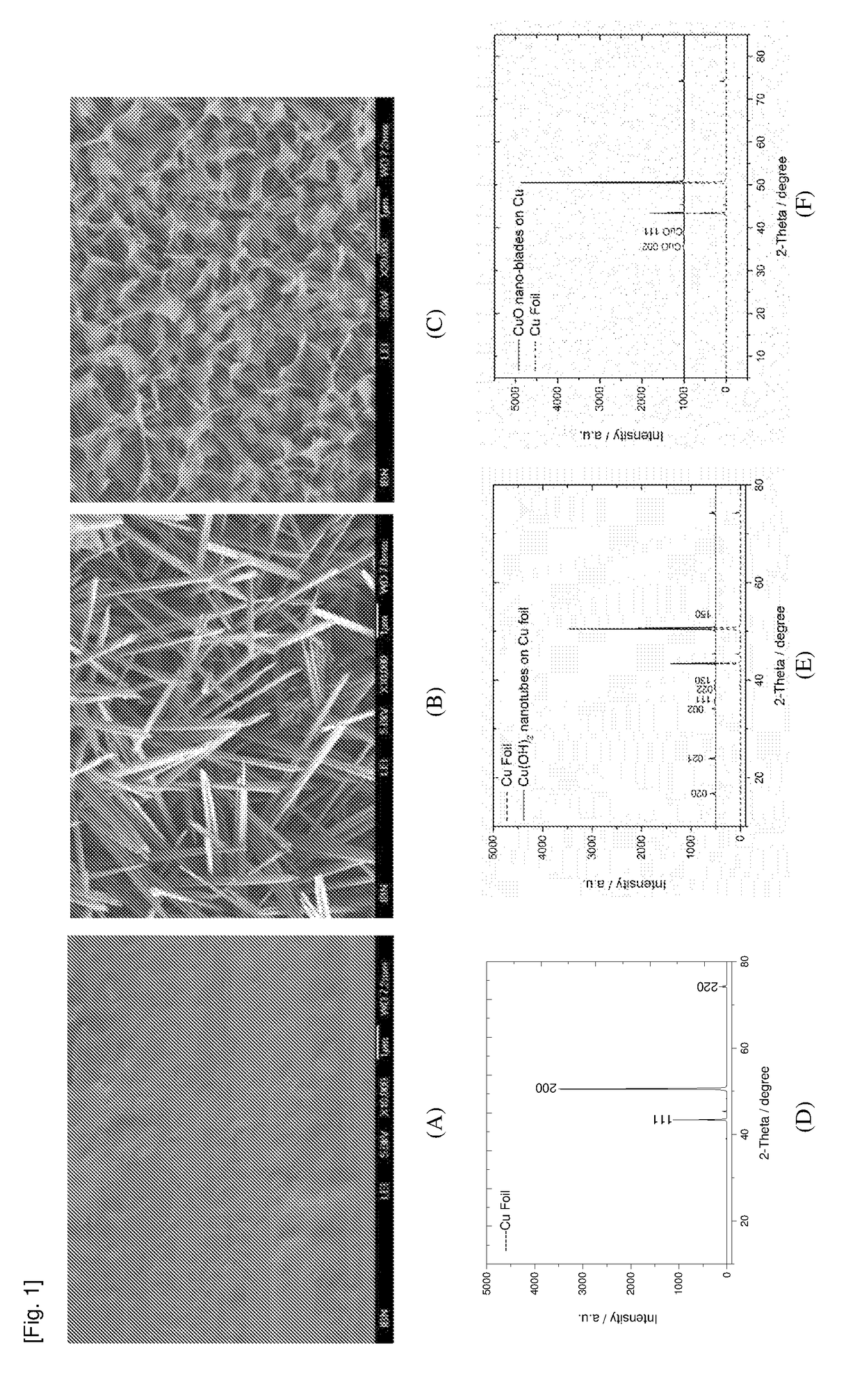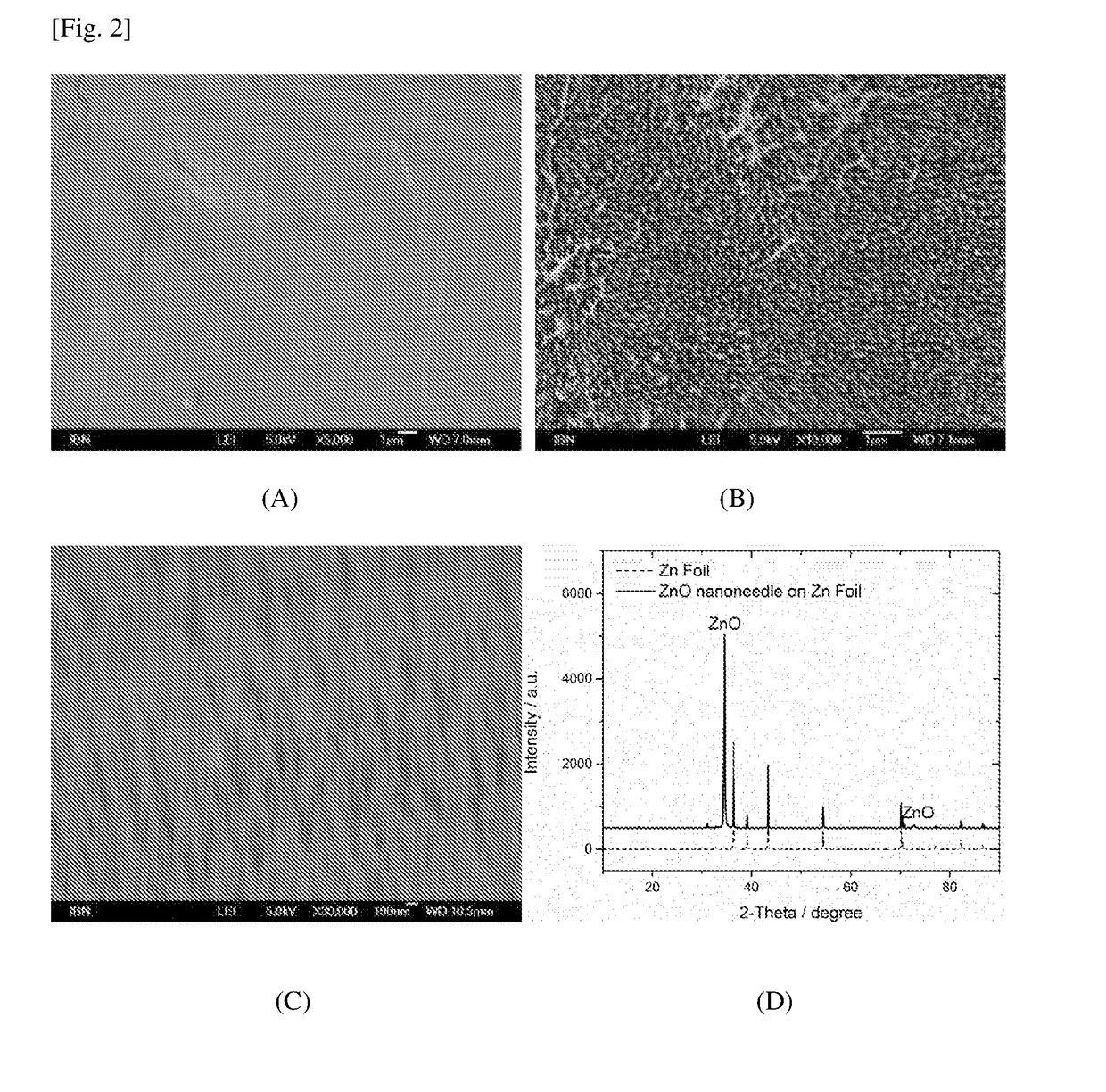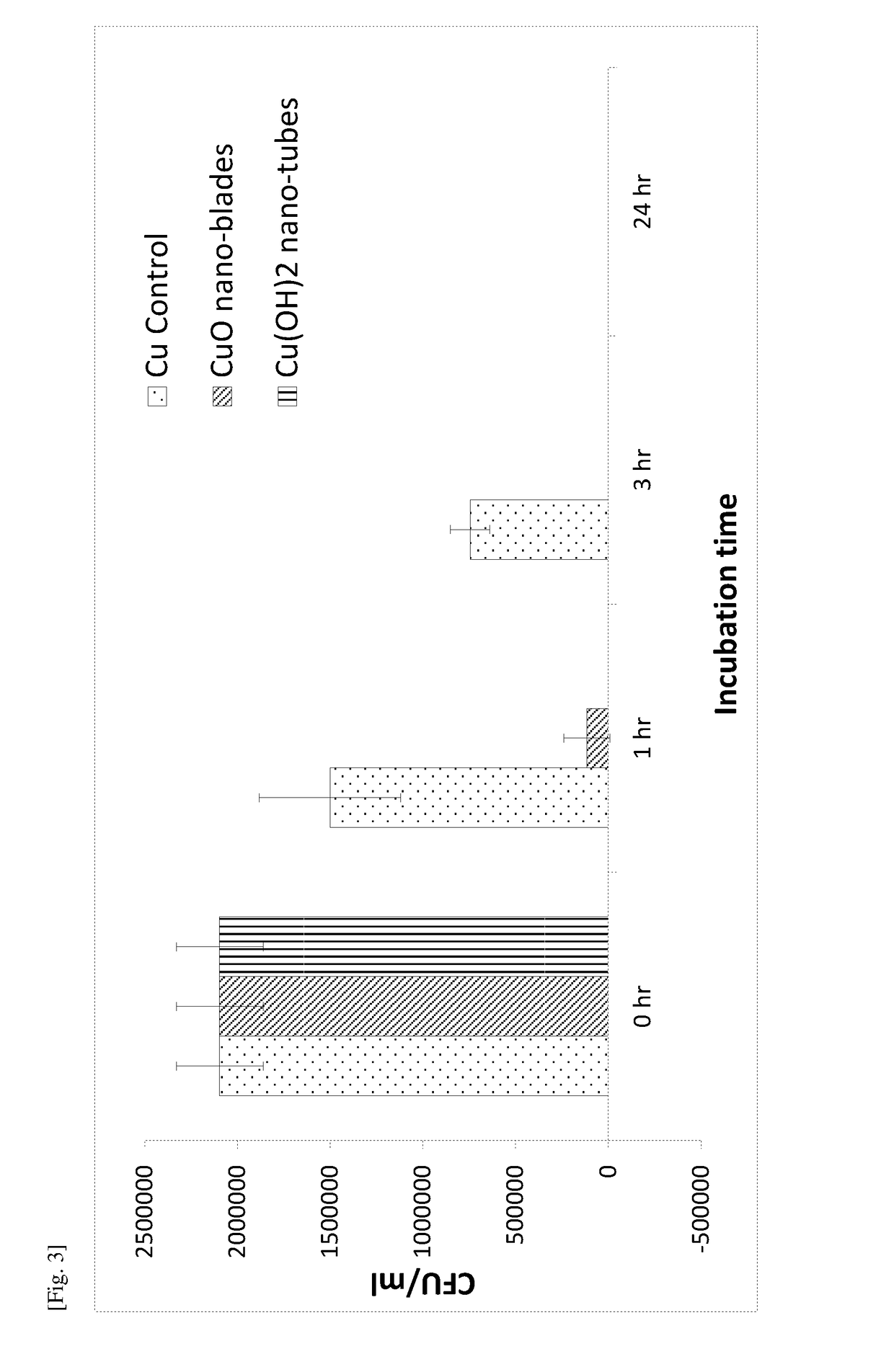Anti-bacterial patterned surfaces and methods of making the same
a technology of patterned surfaces and bacteria, applied in the field of substrates, can solve the problems of substantial inhibition or prevention of microbial cell growth and/or reduction of microbe cell count, and achieve the effect of not resolving these surface features
- Summary
- Abstract
- Description
- Claims
- Application Information
AI Technical Summary
Benefits of technology
Problems solved by technology
Method used
Image
Examples
example 2
on of ZnO Nanoneedles on Zn Substrate
[0094]For the growing of ZnO nanoneedles, 10 ml of 0.5M Zn(NO3)2 aqueous solution and 10 ml 4M KOH were mixed. A Zn foil (20×20 mm) was suspended in the solution for 12 h at room temperature. The surface of the Zn foil was washed 3 times with water and 3 times with ethanol. Subsequently, the Zn foil was dried with flowing N2 and stored for future use.
example 3
ization of Surface
[0095]The surfaces of the samples were characterized by SEM (JEOL JSM-7400E) and XRD (PANalytical X-ray diffractometer, X'pert PRO, with Cu Kα radiation at 1.5406 {acute over (Å)}). Prior to SEM, the samples were coated with thin Pt film using high resolution sputter coater (JEOL, JFC-1600 Auto Fine Coater). Coating conditions: For sample testing (20 mA, 30 s). For Pt coated sample for antibacterial testing (20 mA, 60 s).
[0096]Nano-patterns on copper substrate was prepared by treatment of copper foil in a (NH4)2S2O8 and NaOH solution at room temperature (see Example 1), 2 types of nano-structures were grown on copper substrate. As shown in FIG. 1, when copper foil was treated with lower concentration of the solution for 15 min, nanotubes array was grown. The nanotube array grew upwards and covered the whole area of the copper substrate compactly. Each tube was 5-7 μm in length with an open and sharp tip of ˜100-200 nm diameter. XRD confirmed the structure was Cu(OH...
example 4
Growth Conditions and Sample Preparation
[0098]E. coli, S. aureus, and C. albicans were obtained from American Type Culture Collection (ATCC-8739). Prior to each bacterial experiment, bacterial cultures were refreshed on nutrient agar from stock. Fresh bacterial suspensions were grown overnight at 37° C. in 5 ml of TSB (E. coli and S. aureus) or 5 ml YM broth for C. albicans. Bacterial cells were collected at the logarithmic stage of growth and the suspensions were adjusted to OD600=0.07.
PUM
| Property | Measurement | Unit |
|---|---|---|
| Temperature | aaaaa | aaaaa |
| Temperature | aaaaa | aaaaa |
| Temperature | aaaaa | aaaaa |
Abstract
Description
Claims
Application Information
 Login to View More
Login to View More - R&D
- Intellectual Property
- Life Sciences
- Materials
- Tech Scout
- Unparalleled Data Quality
- Higher Quality Content
- 60% Fewer Hallucinations
Browse by: Latest US Patents, China's latest patents, Technical Efficacy Thesaurus, Application Domain, Technology Topic, Popular Technical Reports.
© 2025 PatSnap. All rights reserved.Legal|Privacy policy|Modern Slavery Act Transparency Statement|Sitemap|About US| Contact US: help@patsnap.com



